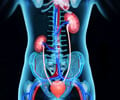The results of a recent study suggest that Haemodialysis (HD) and peritoneal dialysis (PD) may offer similar outcomes to patients with end-stage renal disease (ESRD).

In haemodialysis (HD) harmful wastes of the body such as extra salt and water are filtered off from the blood using an osmosis process of filteration that is monitored by an electronically run machine; while in peritoneal dialysis (PD) the natural lining of the abdomen (called peritoneal membrane) are used for the exchange. In peritoneal dialysis, a fluid is introduced into the abdomen by a tube. This fluid extracts water, salts and waste products from the blood through osmosis and then the fluid is drained out of the body through the same tube..
PD is less expensive when compared to HD in some countries as it does not involve hospitalisation or a caregiver and can be done by the patient at home. However there were doubts regarding the risks associated with PD, especially the risk of infection. This doesn’t mean that HD is a relatively safer method. Thus both PD and HD have benefits and risks. While in HD the patient has to be hospitalised for short duration of the day three-four times a week, PD is done daily upto thrice a day.
The study looked at data from three 3-year cohorts (1996 - 1998, 1999 - 2001, and 2002 - 2004) in the US Renal Data System. Earlier studies pointed to higher risks for death in patients treated with PD, but this has been proved wrong. There is no significant difference in the risk for death for HD and PD patients through 5 years of follow-up.
The study authors conclude that "However, the improvement in PD outcomes may have been a result of more selective assignment of patients to the therapy over the last decade. Thus, should such an expansion of PD use be undertaken, close monitoring of outcomes of patients treated with different dialysis modalities should continue."
Source-Medindia
 MEDINDIA
MEDINDIA



 Email
Email










